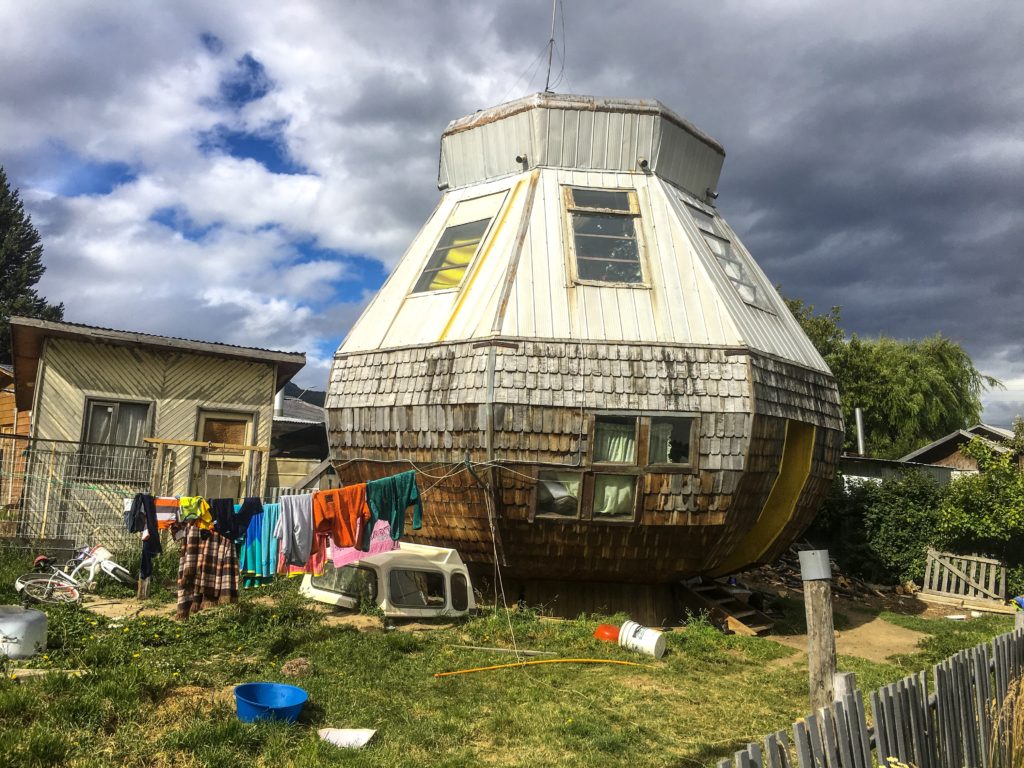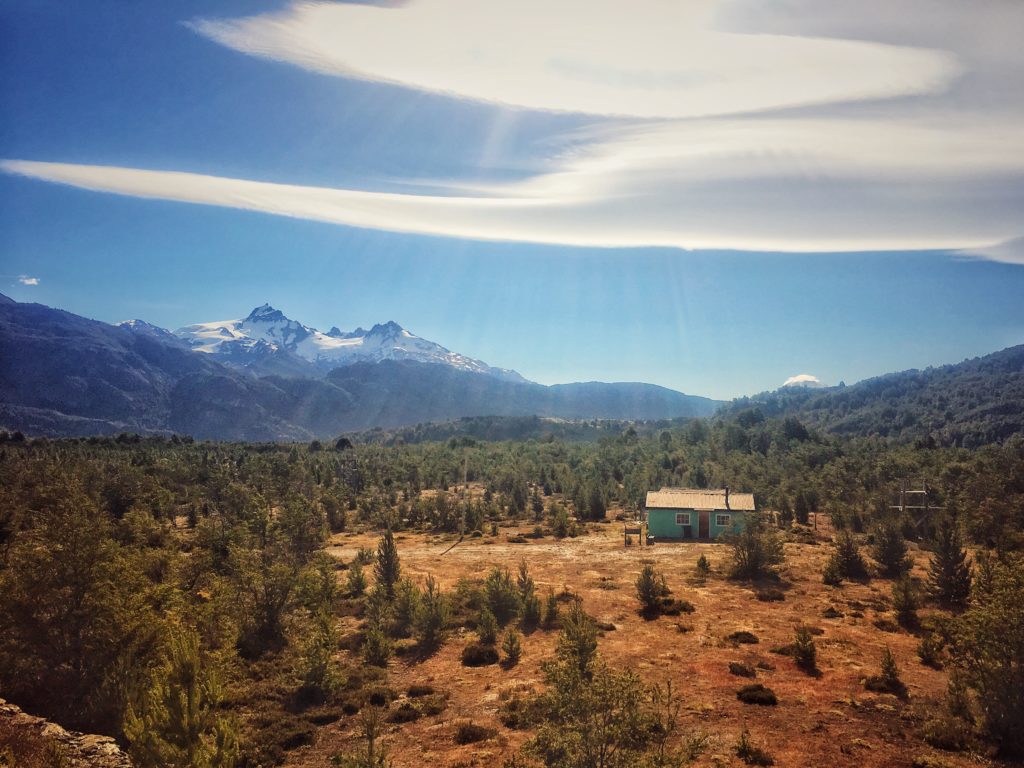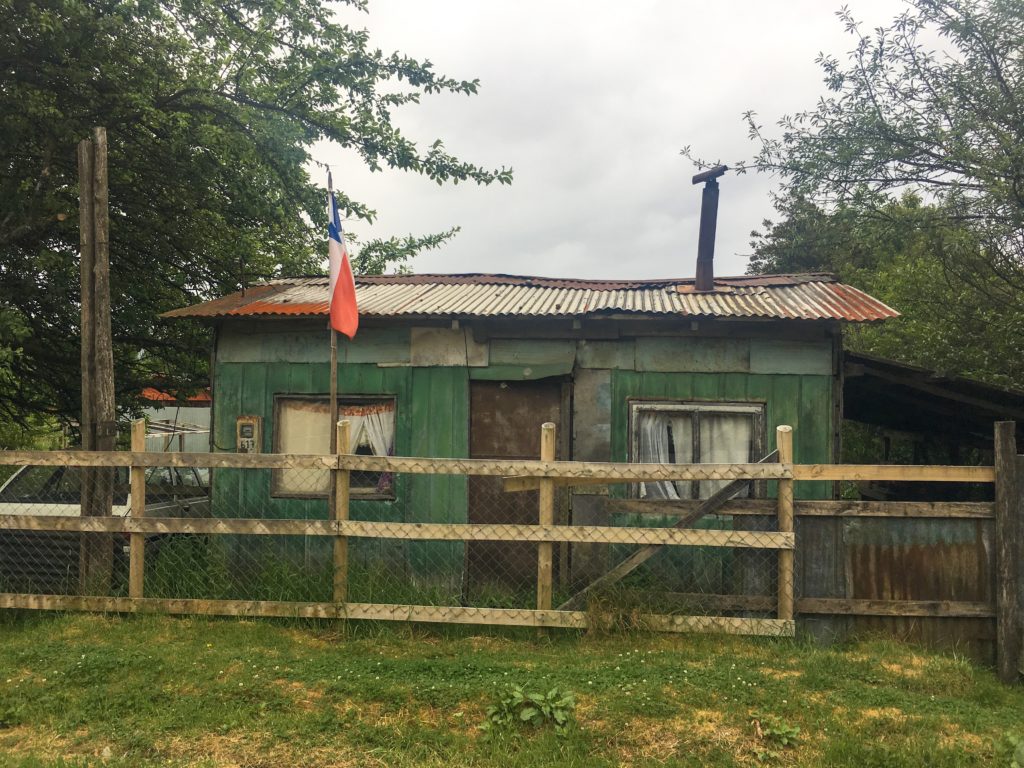
22 Mar The characterful cabins of Patagonia’s Carretera Austral
The grown-up version of the den, wild version of the house, human version of the nest – who else loves a characterful cabin? Below are some snapshots of the handcrafted homes seen on our month-long cycle down Patagonia’s westernmost road, the Carretera Austral. There is an article about this adventure in my Portfolio, here.
As Chatwin wrote, “Patagonia is the farthest place to which man walked from his place of origins. It is therefore a symbol of his restlessness.” And the Carretera Austral is particularly remote. In fact, before this road was built in the 1980s, communities dotted along the long, narrow strip running north to south between the Andes and the fjords were completely isolated – boat travel was the only way to get around.
All the houses along the Carretera Austral – from solitary ones on mountainsides through to colourful villages – reveal as much personality as the people themselves, especially as the fronts are often decorated with life’s necessities like tools, jackets and umbrellas. Most cabins are made from brightly-painted wood and tin; some are clad in shingles – essentially overlapping wooden petals.
One day, I cycled past a particularly ramshackle cabin with a tinker’s yard of junk strewn around it in long grass, a skull and crossbones flag flying from the gate and a rusty old truck parked up. Next door I smiled to see the opposite: a blue cabin, the picture of neatness, with a lawn neatly mowed, a shiny truck outside and a Chilean flag proudly aloft.
What do I love about cabins? The rootlessness appeals: they sit lightly on the landscape. The character in the improvisations. Perfection is boring. The charm of a cabin lies in the natural, simple lines that sometimes lead your eye somewhere unexpected and the fact that they gain character as they settle into the landscape and weather. Roger Deakin once wrote that there is more truth to cabins than houses: “The house represents what we ourselves would like to be on earth: permanent, rooted, here for eternity. But a cabin represents the reality of things: we’re just passing through.”
Inside, these cabins often look like treehouses. Everything possible is crafted from trees – and I mean trees, not wood. Lightly-stripped trunks are often used as structural pillars. I’ve seen a few staircases made from two tree trunks running down in parallel, with live-edged slabs forming the steps.
Sitting in a café here, writing this, I’m reminded of a lovely bit from a John Berger book: “Even when working in the forest alone there is an elusive sense of company … Their presence is palpable. That they held up houses for so long is not surprising. Trees offer company. But company of a discretion which is indistinguishable from indifference … The company they offer is spatial, and a way of measuring, of counting. Long before mathematics, when human language was first naming the world, trees offered their measures – of distance, of height, of diameter, of space.”



















No Comments